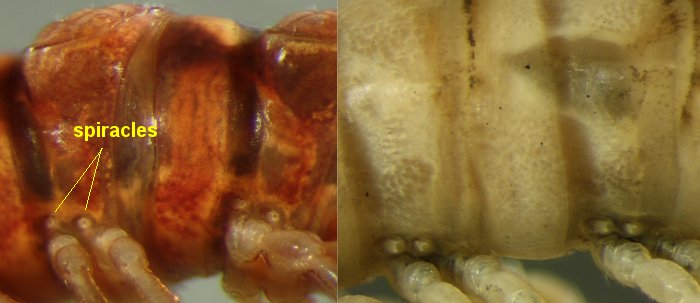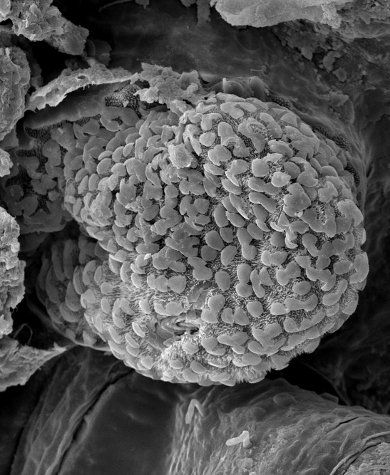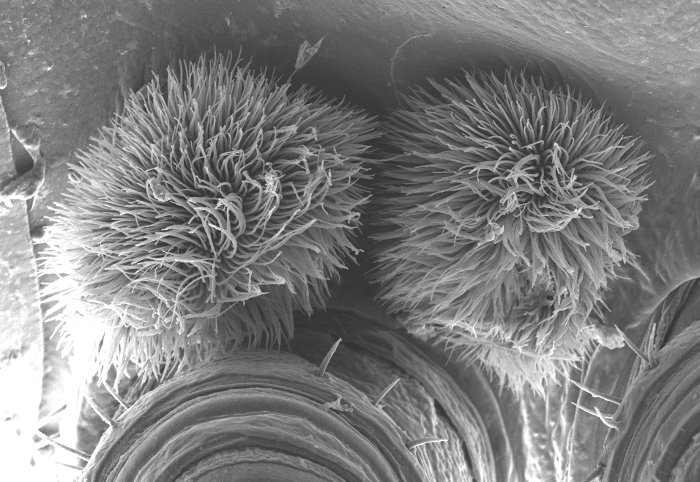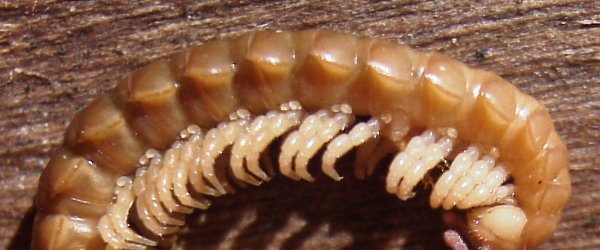Back to: ozopores
Forward to: sex differences
Spiracles
Like insects, millipedes breathe by means of tracheae, which are minute gas-filled tubes that deliver oxygen to tissues and pick up the carbon dioxide released by respiration. The tracheal system connects to the outside world through openings called spiracles. In Polydesmida, the spiracles open near the leg bases, and there is one spiracle close to every leg except the first two.

Left lateral views of midbody rings of Tasmaniosoma hickmanorum (left) and Gasterogramma psi (right) (Dalodesmidae), Tasmania. T. hickmanorum and Lissodesmus modestus (below, left) have two spiracles in their usual positions on a diplosegment, each opening just dorsal and a bit anterior to the leg base. In G. psi (and some other Polydesmida), the two spiracles are closer together and both open over the anterior leg of the diplosegment.
Each spiracle is protected by a filter: a lattice-work or a cluster of tiny projections, usually located just inside the opening (below).

Left: left lateral view of a midbody ring of Lissodesmus modestus (Dalodesmidae), Tasmania.
Right: close-up of anterior spiracle.
The filter can be very fine and beautifully structured in some Paradoxosomatidae, and may even stick out from the spiracular opening, as shown below.
 |
 |
Akamptogonus novarae |
Tholerosoma monteithi |
The strangest spiracular filters I have seen so far are in the genus Dasystigma, which means 'hairy spiracles'. The spiracles look like sea anemones:

Dasystigma margaretae (Dalodesmidae), Tasmania
As with 'teeth' on the limbus, the fine details of spiracles can only be seen at very high magnification. However, unless the spiracles look at low magnification like simple openings (as in the top images on this page), then the spiracles are likely to be structured in an interesting way, and should be examined more closely. For example, the image below is of Dasystigma margaretae, whose spiracles are shown in the scanning electron micrograph above. Even to the unaided eye, there is something odd about those spiracles!

Back to: ozopores
Forward to: sex differences
